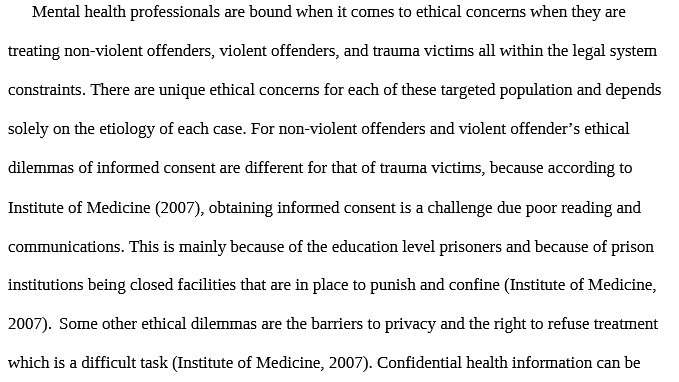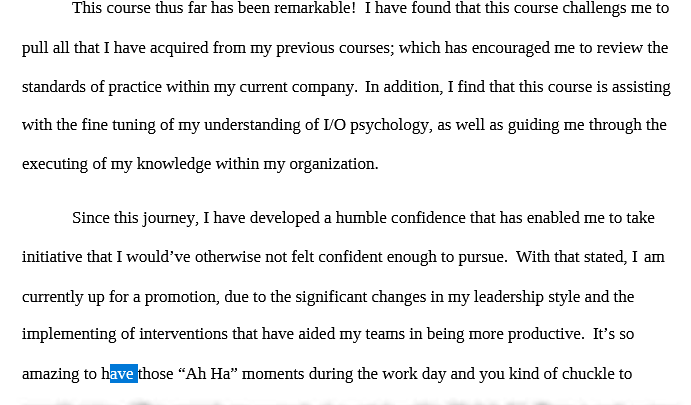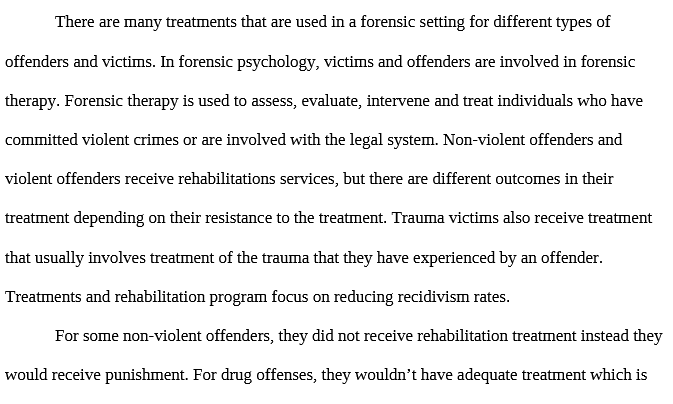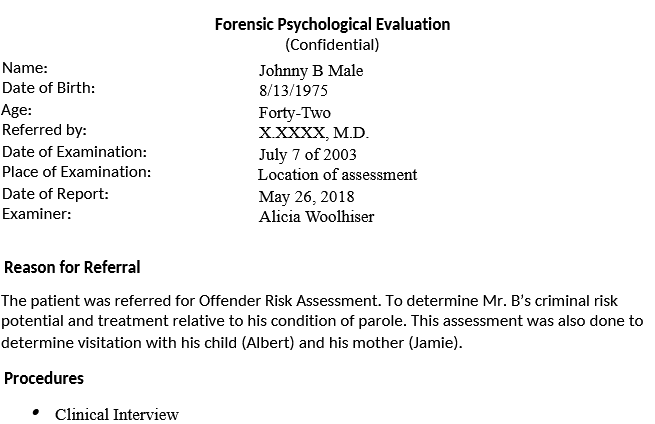PSY 638 PSY638 Module 7-2 Milestone 3.docx- Snhu
$3.99
PSY 638 PSY638 Module 7-2 Milestone 3. docx- Snhu
There are no treatments found to cure Attention Deficit Hyperactivity Disorder (ADHD)but there are some proven options that may reduce symptoms and improve the child’s quality of life. The most used treatments include behavioral interventions and medication. Intervention Strategy: EfficacyBehavioral Parent Training (BPT) was developed in the 1960s due to a need for treatment of disruptive behaviors in young children [ CITATION For13 \l 1033 ]. It utilizes the theory of learning through operant conditioning. Operant conditioning emphasizes the effect punishments and rewards have on behavior. Skinner (1948) found that reinforcements can impact the learning process and gradually lead to the desired behavior. BPT helps parents/caregivers establish a rules and rewards system for their child and teaches them how to place focus on the good behaviors their child exhibits. Some skills acquired during training include but are not limited to:Ability to identify the child’s good behavior and reward it while ignoring or when necessary, institute a punishment for the negative behaviorEstablish a daily routine that includes guidelines for completing homework, chores, bedtime, or other routinesProvide the child with specific instructions to complete tasks rather than general direction (i.e. “Please hand your coat on the coat rack” versus “Please clean your room”)Minimize distractions in the home and choices (prevents the child from being overwhelmed)Help the child set small achievable goals that over time, lead to a larger accomplishment.
Description
PSY 638 PSY638 Module 7-2 Milestone 3. docx- Snhu
There are no treatments found to cure Attention Deficit Hyperactivity Disorder (ADHD)but there are some proven options that may reduce symptoms and improve the child’s quality of life. The most used treatments include behavioral interventions and medication. Intervention Strategy: EfficacyBehavioral Parent Training (BPT) was developed in the 1960s due to a need for treatment of disruptive behaviors in young children [ CITATION For13 \l 1033 ]. It utilizes the theory of learning through operant conditioning. Operant conditioning emphasizes the effect punishments and rewards have on behavior. Skinner (1948) found that reinforcements can impact the learning process and gradually lead to the desired behavior. BPT helps parents/caregivers establish a rules and rewards system for their child and teaches them how to place focus on the good behaviors their child exhibits. Some skills acquired during training include but are not limited to:Ability to identify the child’s good behavior and reward it while ignoring or when necessary, institute a punishment for the negative behavior
PSY 638 PSY638 Module 7-2 Milestone 3. docx- Snhu
Establish a daily routine that includes guidelines for completing homework, chores, bedtime, or other routinesProvide the child with specific instructions to complete tasks rather than general direction (i.e. “Please hand your coat on the coat rack” versus “Please clean your room”)Minimize distractions in the home and choices (prevents the child from being overwhelmed)Help the child set small achievable goals that over time, lead to a larger accomplishment. Autism spectrum disorder (ASD) refers to a group of complex neurodevelopment disorders characterized by repetitive and characteristic patterns of behavior and difficulties with social communication and interaction” (National Institute of Neurological Disorders and Stroke,2019). This term refers to a wide range of symptoms, skills, and levels of disability in functioning and occurs in people with ASD. Published in 2013, the DSM-5 included Asperger syndrome, childhood disintegrative disorder, and pervasive developmental disorders. Occurs in every racial and ethnic group, across all socioeconomic levels. Though this is true, boys are more likely to develop ASD than girls. The Centers for Disease Control and Prevention estimated that one in sixty-eight children have ASD.
PSY 638 PSY638 Module 7-2 Milestone 3. docx- Snhu
Scientists believe that both genetics and environment play a role in ASD. There is concern about the rate of autism in recent decades without explanation as to why it is occurring or being diagnosed more often. There are several identified genes associated with the disorder. Imaging studies have found differences in the development of several regions of the brain. Assessment of Resources: There is no cure for ASD. There are many behavioral and therapeutic interventions that are designed to aid in symptoms. Educational and behavioral interventions are considered successful in children with ASD. Based on these interventions, therapists use structured and skill-oriented training sessions to aid children in developing different areas, such as social and language skills. One important service is early intervention. “Research shows that early intervention treatment services can greatly improve a child’s development” (Centers for Disease Control and Prevention, 2019).
PSY 638 PSY638 Module 7-2 Milestone 3. docx- Snhu
- PSY 211 – Lifespan Development (5015 Documents),
- PSY 215 – Abnormal Psychology (4335 Documents),
- PSY 108 – Introduction to Psychology (3759 Documents),
- PSY 223 – Statistics for Psychology Research (2652 Documents),
- PSY 216 – Psychology of Personality (1841 Documents),
- PSY 510 – Research Methods (1748 Documents),
- PSY 520 – Research Methods in Psychology II (1469 Documents),
- PSY 257 – Psychology (1451 Documents),
- PSY 310 – Criminal Psychology (1393 Documents),
- PSY 200 – FOUNDATIONS OF ADDICTIONS (1379 Documents),
Only logged in customers who have purchased this product may leave a review.







Reviews
There are no reviews yet.